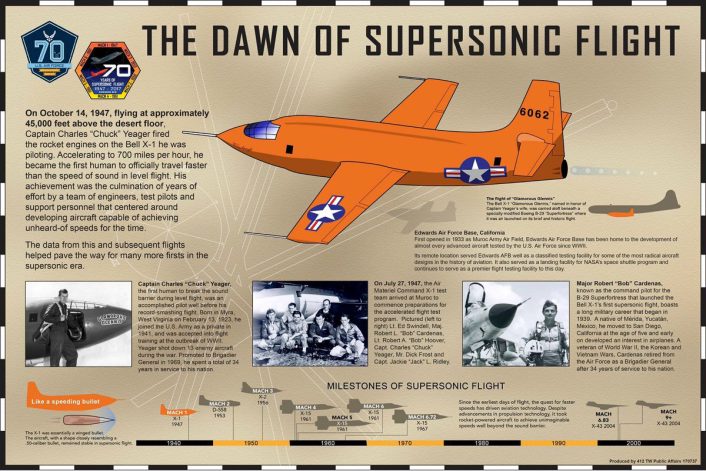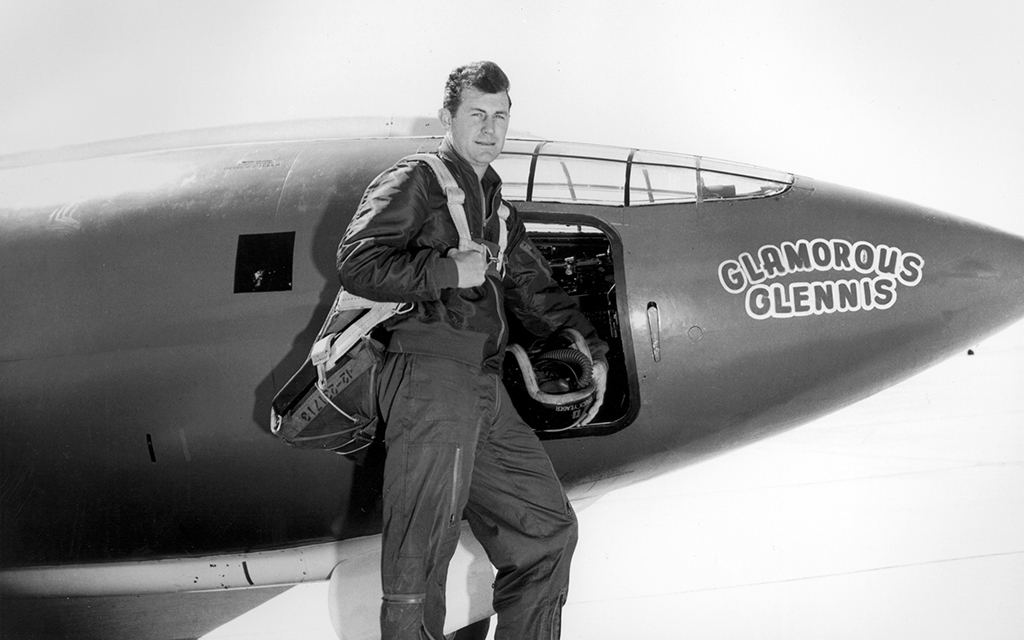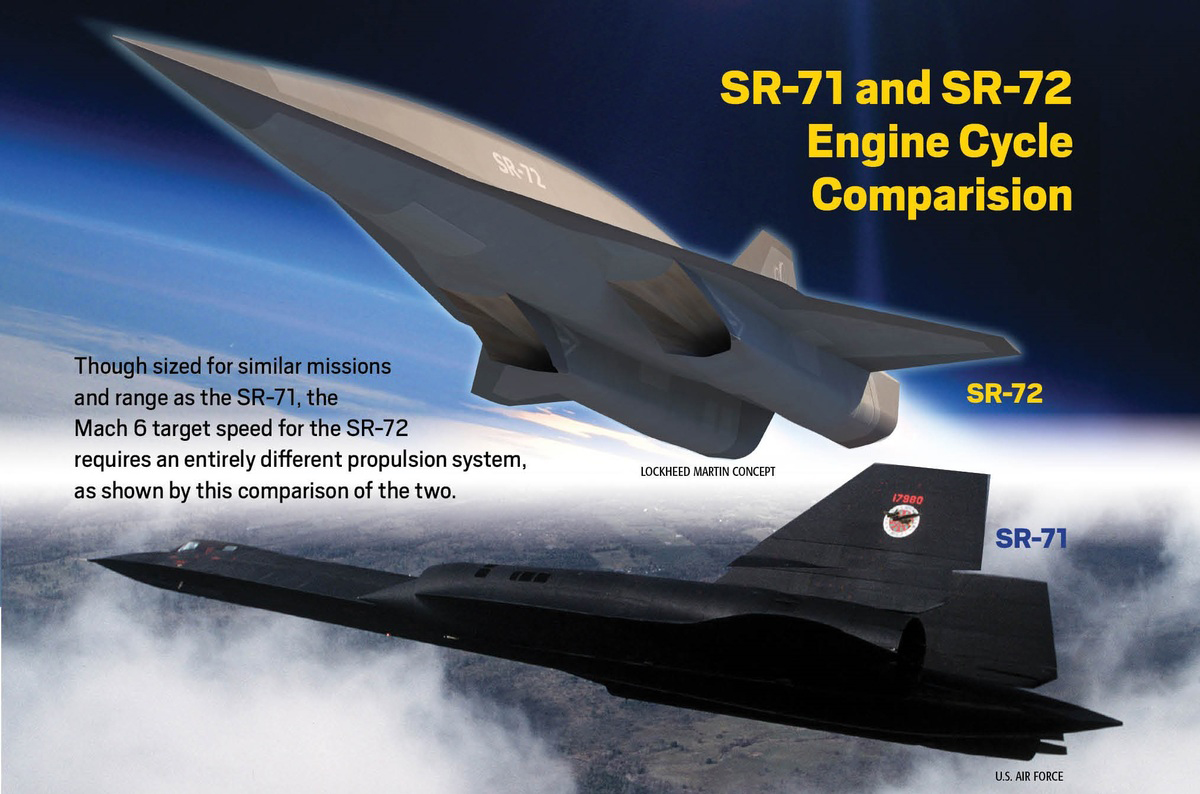The Right Stuff: the first manned supersonic flight.
On Oct. 14, 1947, U.S Air Force Captain Charles “Chuck” Yeager (now 94), flying the rocket-powered Bell X-1 aircraft #46-062 christened “Glamorous Glennis,” dropped from the bomb bay of a specially modified B-29 from Muroc Army Air Field (now Edwards Air Force Base), “broke” the sound barrier achieving a peak speed of Mach 1.06 (361 m/s, 1,299 km/h) at 45,000 feet, before landing on a dry lake bed.
It was flight number 50 and the achievement, meant to be secret but leaked to press later, took place in the skies over Rogers Dry Lake in the Mojave Desert.
Yeager enlisted as a private in the U.S. Army Air Forces Sept. 12, 1941. Later he was accepted to flight training in the flying sergeants program and, upon completion, was promoted to flight. Yeager demonstrated his flying skill during World War II when he became an, “ace in a day” after downing five enemy aircraft in one mission.
Yeager is among the guest stars in The Right Stuff, a 1983 American epic historical drama film based on Tom Wolfe’s best-selling 1979 book (actually he also play a cameo in the movie). The Right Stuff is about the Navy, Marine and Air Force test pilots who were involved in aeronautical research at Muroc Army Air Field, as well as the Mercury Seven, the seven military pilots who were selected to be the astronauts for Project Mercury, the first manned spaceflight by the United States.
The Right Stuff’s first part is about the attempt of breaking of the sound barrier that, indeed, “opened up the doors of space to us,” as Yeager explained 65 years later.

Interestingly, as shown in the movie, two nights before the schedule date for the record flight, Yeager fell from a horse and broke two ribs. He was worried that the injury prevent him from flying the mission. He went to a civilian doctor who taped his ribs and only told his wife, as well as friend and fellow project pilot Jack Ridley, about the accident.
On the day of the flight, Yeager could not seal the X-1’s hatch by himself, such was the pain from the broken ribs and Ridley, flying in the B-29 “mothership” along with his friend, helped Yeager to seal the hatch by means of a lever: the end of a broom handle.
The rest is history.
To celebrate the first supersonic flight the U.S. Air Force has released an interesting infographic that shows the milestones of supersonic flight: from Mach 1 of the Bell X-1 to Mach 9.6 achieved on Nov. 16, 2004, by the third flight of the X-43A Hyper-X, a small experimental unmanned research aircraft, built in three examples, designed to flight-demonstrate the technology of airframe-integrated supersonic ramjet or “scramjet” propulsion at hypersonic speeds above Mach 5.













